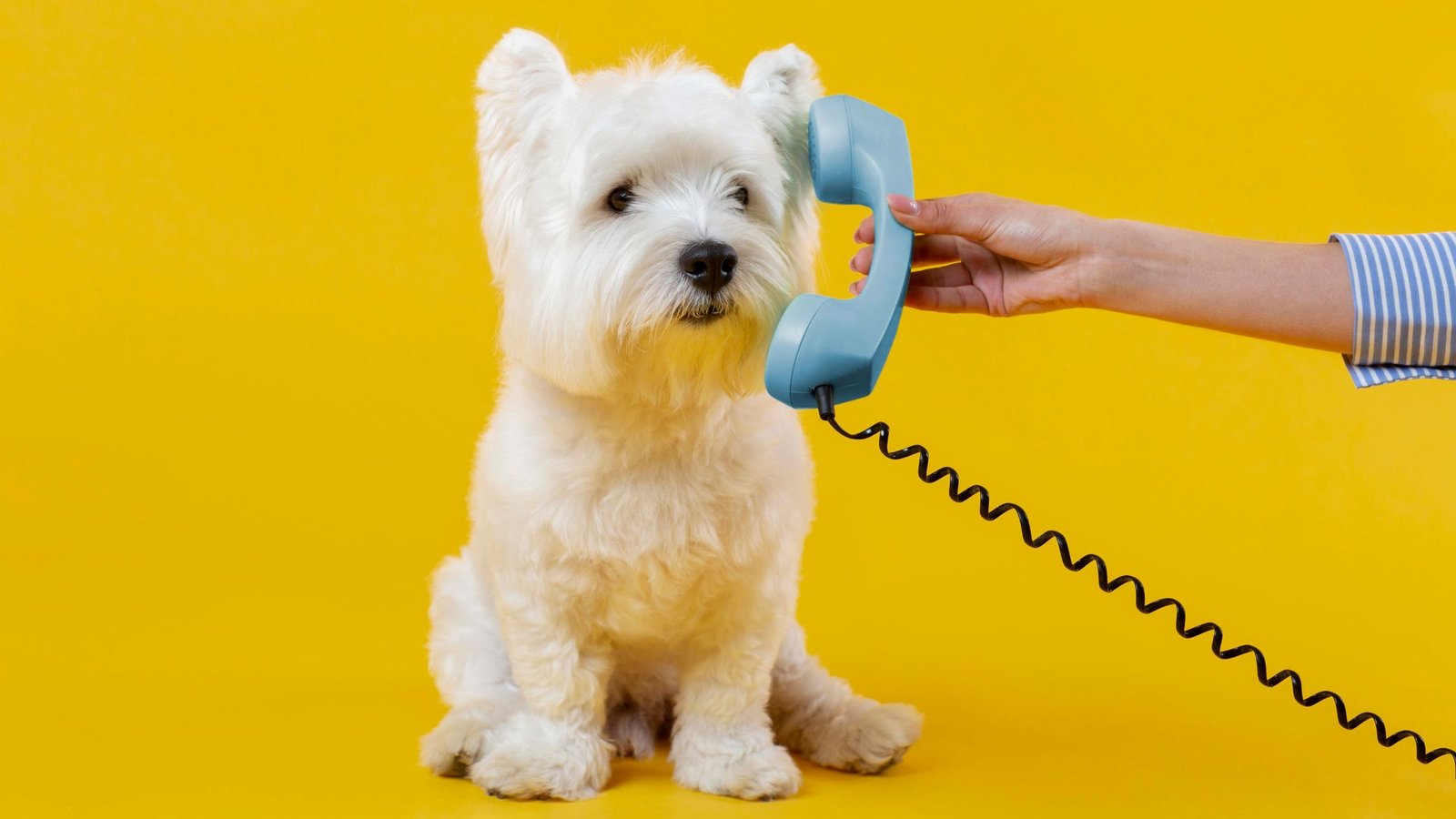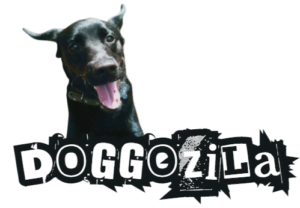Dogs have remarkable abilities to communicate with us and each other. They utilize various methods like sounds, body movements, and facial expressions. Comprehending canine communication strengthens our bonds with our furry companions. It also helps prevent misunderstandings or conflicts.

HOW DO DOGS COMMUNICATE EXPLAINED
By learning to interpret doggy expressions, we deepen our relationships. We gain insights into their emotions, needs, and intentions. This knowledge fosters harmony between humans and canines.
Dogs Communicate with Vocalizations
Dogs vocalize using distinct sounds like barks, whines, growls, and howls. Each vocalization conveys different meanings through tone, pitch, and frequency variations.
A high-pitched bark often signals excitement or eagerness. In contrast, a low-pitched bark warns of potential threats. Whines can express appeasement or requests, while growls indicate aggression or fear. Howling may signify loneliness or long-distance communication. Yelps express pain or surprise, and sighs convey contentment or boredom.
Dogs Communicate with Body Language
Dogs use body language like tail wagging, ear positioning, and eye contact. Their posture, movements, and gestures reveal emotions and intentions. Behaviors like tongue flicking, sneezing, yawning, and belly exposure also convey messages.
Play bows, paw raising, and freezing provide additional cues. The context and combination of signals determine their precise meanings. For instance, a wagging tail may indicate happiness or friendliness. Conversely, a tense, stiff posture could signal fear or aggression.
By observing these cues attentively, we gain insights into our canine companions’ inner worlds. This knowledge fosters deeper bonds built on mutual understanding and trust.
Dogs communicate through a combination of body language and vocalizations. Their body movements convey specific messages that can be interpreted by observing their behavior. For instance, a wagging tail indicates happiness or excitement, but the speed and direction of the wag can provide more nuanced cues. A fast, high wag may signify joy, while a lower, slower wag could mean uncertainty.
Similarly, ear positioning reveals a dog’s emotional state. Pricked forward ears suggest interest or alertness, whereas pinned-back ears signal fear or submission. Eye contact can indicate trust or challenge, depending on the intensity and duration of the gaze. Tongue flicking often denotes anxiety or an attempt to appease, while sneezing and yawning may reflect discomfort or stress.
Belly exposure demonstrates trust or submission, while a play bow invites interaction or serves as a friendly greeting. Raising a paw could signify curiosity or a request for attention. Freezing behavior usually indicates tension or uncertainty in a particular situation. By understanding these subtle cues, humans can better comprehend their canine companions’ emotional states and needs.
Dogs Communicate with Facial Expressions
Facial expressions form an integral part of how dogs communicate with humans and other dogs. Their eyes, mouth, eyebrows, and overall facial movements convey specific messages. Common expressions include smiling, baring teeth, snarling, lip licking, panting, drooling, and tongue showing. However, interpreting these expressions requires considering the context and the dog’s overall mood.
A smiling dog with a relaxed, open mouth typically indicates contentment or relaxation. In contrast, bared teeth or snarling can signal aggression, fear, or a warning. Lip licking often suggests anxiety or discomfort, while panting may indicate stress or overheating. Drooling is frequently associated with anticipation or salivation, while a visible tongue can signify happiness or playfulness.
By carefully observing and understanding these facial cues, humans can better interpret a dog’s emotional state and respond appropriately, fostering a deeper bond and enhancing communication between species.

MOST ASKED QUESTIONS ABOUT DOG COMMUNICATION
Understanding Dog Language, Behavior, and Bonding
Dogs are adept at expressing their emotions through various physical cues. A wagging tail can indicate joy or excitement, depending on its speed and direction. An erect ear suggests attentiveness, while a flattened ear signifies fear or submission. Eye contact fosters trust or asserts dominance, based on duration and intensity. Tongue flicking implies anxiety or a conciliatory gesture. Sneezing and yawning may indicate discomfort or stress.
Exposing the belly conveys trust or submission. A play bow invites play or serves as a friendly greeting. Raising a paw expresses curiosity or a request. Freezing signifies tension or uncertainty. Facial expressions, like smiling, baring teeth, snarling, licking lips, panting, drooling, and tongue showing, communicate diverse emotions. For instance, a smiling dog appears content or relaxed, while bared teeth suggest aggression or fear.
These are some of the ways that dogs communicate with us and with other dogs based on vocalizations, body language, and facial expressions. However, it is important to remember that every dog is an individual and may have different ways of communicating depending on their personality, breed, experience, environment, and situation. The best way to understand your dog’s communication is to observe their behavior and respond accordingly.
Decoding the World of Dog Communication
Dogs are incredibly expressive animals, and understanding their communication is key to building a strong bond with your furry friend. In this article, we’ll explore the most asked questions about dog communication, shedding light on their unique language, behavior, and how you can enhance the connection between you and your canine companion.
Dog communication is a rich and intricate tapestry of signals, sounds, and behaviors. Understanding this language is essential for creating a fulfilling and harmonious relationship with your four-legged companion.
HOW DO DOGS COMMUNICATE?
Dogs communicate primarily through body language. Their posture, tail position, ear orientation, and facial expressions provide a wealth of information about their emotions and intentions.
Dogs use a range of gestures and signals to communicate. These can include play bows, yawning, or even offering a paw. Each gesture carries its own meaning.
Gestures and Signals
Dogs use different sounds to convey messages. Barking, whining, growling, and howling convey various emotions. The tone, pitch, and frequency help you understand your dog’s feelings.
Your dog may bark excessively due to boredom, anxiety, or seeking attention. Understanding the underlying reason is key to addressing excessive barking. Tail wagging can also convey different emotions. A loose, wide wag often indicates happiness and excitement. However, a stiff, slow wag may signal unease or aggression.
To improve communication, actively listen and respond to your dog’s signals. Training with positive reinforcement enhances your connection. Pay close attention to your dog’s body language and behaviors. Then, respond accordingly to their needs, whether for play, companionship, or comfort.
If your dog barks excessively or wags their tail constantly, it could indicate a need for more attention, exercise, or mental stimulation. Addressing these underlying needs can help reduce excessive barking and tail wagging.
Why does my dog bark so much and wag his tail all the time?
How can I improve communication with my dog?

STRENGTHENING YOUR BOND WITH YOUR FURRY FRIEND
The Power of Training and Positive Reinforcement
Training your dog to respond to commands and cues is a fantastic way to improve communication. Positive reinforcement techniques, like rewarding good behavior, strengthen the bond between you and your dog. Be an attentive observer of your dog’s body language and behaviors. When you notice them communicating a need, respond promptly, whether it’s for playtime, companionship, or comfort.
Bonding Through Play and Quality Time
Spending quality time with your dog strengthens your connection. Engage in play, walks, and cuddles. The more you invest in your relationship, the stronger your bond will become! Understanding dog communication requires observation, patience, and responsiveness. With practice, you can decipher this fascinating language and connect deeply with your furry companion.
Strengthening your bond with your furry companion involves recognizing and appreciating their unique ways of communication. By observing and comprehending their body language, vocalizations, and gestures, you open doors to a deeper connection. Every dog has a distinct personality, and their methods of expressing themselves may vary considerably. Tailoring your approach to their individual needs and traits further enhances your relationship. For instance, some dogs may rely more on subtle body cues, while others communicate through vocal expressions.
Being attuned to their preferred mode of interaction is key. Moreover, dogs often mirror the energy and emotions of their owners. Maintaining a calm and positive demeanor can facilitate better understanding and harmony. Remember, building a fulfilling companionship is a two-way street. Just as you learn to interpret their signals, they also pick up on your emotional state and body language.



